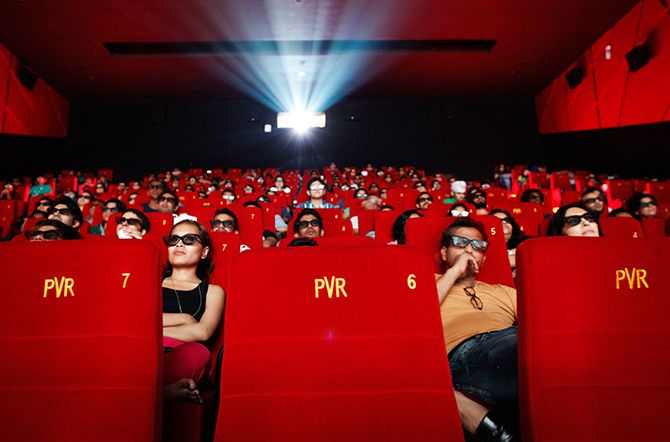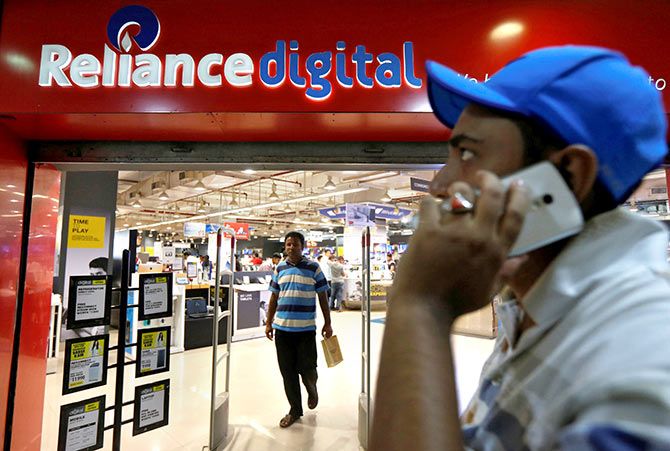From middle-class, it is middle-income India that marketers are chasing for volumes.
The 166 million households in this category is their new focus.

After a disastrous serving of the 'Thanda Matlab Coca-Cola' Rs 5, 200 ml bottle strategy a decade ago, Coca-Cola India is backing small serves again: 180 ml cans and 300 ml PET bottles.
Arch-rival Pepsi too has introduced 150 ml cans to create new consumption opportunities for consumers on the go.
From chocolate-maker Mondelez to French cosmetics giant L’Oréal, small is back again with a bang. And not just as a stepping stone to bigger packs, which many a marketer thought the consumer will ultimately upgrade to given rising incomes and a culture of consumption taking root.
Here is why.

A study, Household Survey on India’s Citizen Environment & Consumer Economy, by independent think tank People Research on India’s Consumer Economy or PRICE reveals some interesting insights. With a big sample of around 61,000 households, the survey presents an engaging picture of Consumer India in a manner that makes it easier to understand why marketers of every hue are back at chasing the mass market.
The Middle-Income India, as PRICE’s co-founder Rajesh Shukla likes to call it, is where most of the action will happen, given that the low-hanging fruits of middle-class India that makes up the top income quintile in the country are almost over and the poor, the bottom quintile, is still to embark on any meaningful consumption journey.
The top quintile, accounting for 45 per cent of income and 36 per cent of consumption expenditure, has already been tapped and their appetite and preferences for a host of products and services has either been somewhat satiated or they have graduated, and in cases even completely moved to alternative and premium products. To sustain their mass-market brands marketers are now delving deep into the next big consumer segment, the Middle-Income India.

Middle-Income India is what you get if you leave aside the top 20 per cent and bottom 20 per cent of consumers by average household income in the country. A mass of 166 million households, with a respectable 48 per cent share of national consumer income and 55 per cent share in consumption expenditure (for routine items) is not to be taken lightly.
Middle-Income India’s average annual household income varies from a low of Rs 2.20 lakh (49 million households) to a high of Rs 3.59 lakh (61 million households). Another 56 million households here earn on an average Rs 2.68 lakh per annum.
Compared to the top 20 per cent, in terms of absolute terms, Middle-Income Indians are a 50 per cent bigger consumer market, with absolute consumption expenditure of around Rs 3.56 lakh crores compared to Rs 2.39 lakh crores for the top income quintile.
However, with an average household size varying from a high of 5.43 people for households earning Rs 2.68 lakhs per annum to 4.36 people for households in the Rs 3.59 lakhs per annum income bracket, compared to 3.75 for the top quintile consumers, aspiration runs ahead of affordability for this segment. Thanks to satellite television reach to the remotest part of the country, the middle-income consumer is aware of brands, but often lacks the ability to consume it in the manner offered by the marketers.

With almost half the share of total national disposable income, at over 48 per cent, no wonder Middle-Income India is increasingly getting attention from even supposedly premium and discretionary goods marketers like L’Oréal’ and the cola majors. “Instead of moving from the sachet of (Unilever shampoo) Clinic Plus to the bottle of Clinic Plus, they would go from the sachet of Clinic Plus to the sachet of L’Oréal Paris,” Jean-Christophe Letellier, L’Oréal’s India head, told The Wall Street Journal in 2016.
And while sugary and carbonated drinks may have become passé for a section of Indian consumers who have moved on to healthier options in juices, milk-based beverages and such like, making its brands available at lower prices and convenient single-serve packs is a way to spur consumption with the Middle-Income Indians for whom bottled soft drinks may still be aspirational.
This time the cola giants are chasing profitable growth, unlike the unsustainable volume chase of the early 2000s that bled both Coca-Cola and Pepsi, and put paid to their strategy of expanding their reach.










